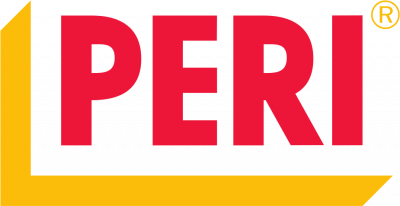Oriented burlap tile (OSB) is produced by flat, wood veneer and special binder, under pressure.
OSB types: Composition, structure and production

OSB Board Type: Composition, Structure and Production
Oriented strand board (OSB) is made by applying a flat wooden veneer and a special pressure bonding agent.
The first step in producing OSB is sorting the raw materials. The raw materials used are aspen, spruce, pine and poplar.
After sorting, the logs are mechanically cleaned of bark. The cleaned logs are sawn into pieces and then the chips are cut, and at the end of the process the chips are dried using a conveyor.
The binder used in OSB boards is wax and glue based on paraffin, formaldehyde oil or boric acid. The binder is mixed with the chips. The resulting mass is poured as an even mat and directed to the pressing equipment.
The board pressing equipment operates at a pressure of 5 N/mm2 and a temperature of 170-200 °C, which is required for the glue to set. Temperature and pressure are constantly monitored in the pressure zone. After pressing, the edges are removed. The material thickness, density and other technical parameters are checked.
After checking the material quality, the OSB is cut into standard sized pieces. If necessary, the edges are profiled. The finished boards are fed into the labeling and packaging machines.
Type of OSB boards:
- OSB1 - Has low moisture resistance compared to other boards, so it is only used in dry, non-production areas.
- OSB2 - The material is used to build load-bearing walls in dry conditions.
- OSB3 - The most common cladding and construction material. Resistant to load; has an optimal price to functionality ratio. The technical characteristics allow it to be used in rooms with high humidity.
- OSB4 - The most durable and expensive material. Its high durability allows the use of building structures and high loads in humid environment.
- * OSB3 and OSB4 are not waterproof. Only the adhesive, which does not lose its properties when in contact with water, is water-resistant. The board must therefore be protected against direct contact with water; otherwise it will become saturated with water.
Vapour permeability of OSB boards:
Vapour permeability, m (dry/wet) - the value of which can be written as 200/150. It is the relative conductivity coefficient between dry and wet. It only indicates how poorly the OSB board conducts vapour compared to air, as it is not only wood chips, but also a combination of wood and oils, which results in low vapour permeability.
OSB processing:
Due to the composition and structure of the board, various types of processing are possible. Cutting, chamfering, drilling, jointing, sawing and milling is possible with stationary and small electric and mechanical tools.
One of the main factors when working with OSB is the safety of life and health. The use of personal protective equipment is therefore recommended. Ventilation of the building is necessary.
The ability of OSB boards to cling to a bracket:
The high density and the presence of fibres in the board ensures a firm hold. All types of fasteners and screws such as self-tapping screws, nails, dowels etc. can be used. The fasteners can be fixed at a distance of 10 mm from the edges. As a last resort, you can nail at a distance of 6 mm from the edges.
A good quality paint can be used on oriented strand board.
The following must be taken into consideration when treating the board
- The surface must be primed before painting. If the surface is lined, at least two coats of primer must be applied, as treated OSB increases its absorption capacity.
- For OSB, it is recommended to use a primer that contains anti-moss additives.
- A light sanding of each coat with primer and/or paint is recommended. This method ensures an even distribution of paint over the entire surface.
- Moisture-resistant paints are recommended; an acrylic-based varnish or paint is best.
- OSB boards can be glued with any joinery glue. Sanding the glue surface will make the glue joints much stronger.
Environmental friendliness of the material:
One of the most controversial issues regarding OSB is the material's toxicity and health hazards. The binder used in the manufacturing process contains melamine-formaldehyde and phenol-formaldehyde oils, which release formaldehyde when exposed to high temperatures. This is why it has been suggested that this material is more dangerous than particleboard and plywood.
However, oriented strand board has a 3% adhesive and oil content while particleboard has a 12-14% adhesive and oil content.
OSB is classified into three groups according to its formaldehyde content in Europe:
- E1 - up to 0.1 ppm, 0.125 mg/m3;
- E2 - 0.1 - 1.0 ppm, 0.125 - 1.25 mg/m³;
- E3 - 1.0 - 2.3 ppm, 1.25 - 2.87 mg/m³;
Material with formaldehyde emission E1-E2 is approved for use in construction, while material with formaldehyde emission E3 is prohibited.
OSB Applications:
As a building material, OSB competes with MDF, fibreboard and plywood in terms of its application area.
Wall cladding and wrapping: The material is resistant to warping and is compatible with all types of wall cladding material.
Rough flooring: OSB is used for flooring on seamless concrete subfloors and wooden beams. Compatible with any type of sound and thermal insulation material. In lightweight structures, the material is used as a floor covering.
Creating full coverage under the roof: due to high strength of OSB, it withstands high wind loads; therefore, it can be used under any type of roofing.
Bearing structures: any type of structure is possible thanks to the strength of OSB.
Furniture manufacture: functional and decorative board elements in various thicknesses can be produced.
Please note!
If OSB is used in building structures, additional ventilation measures must be taken.

